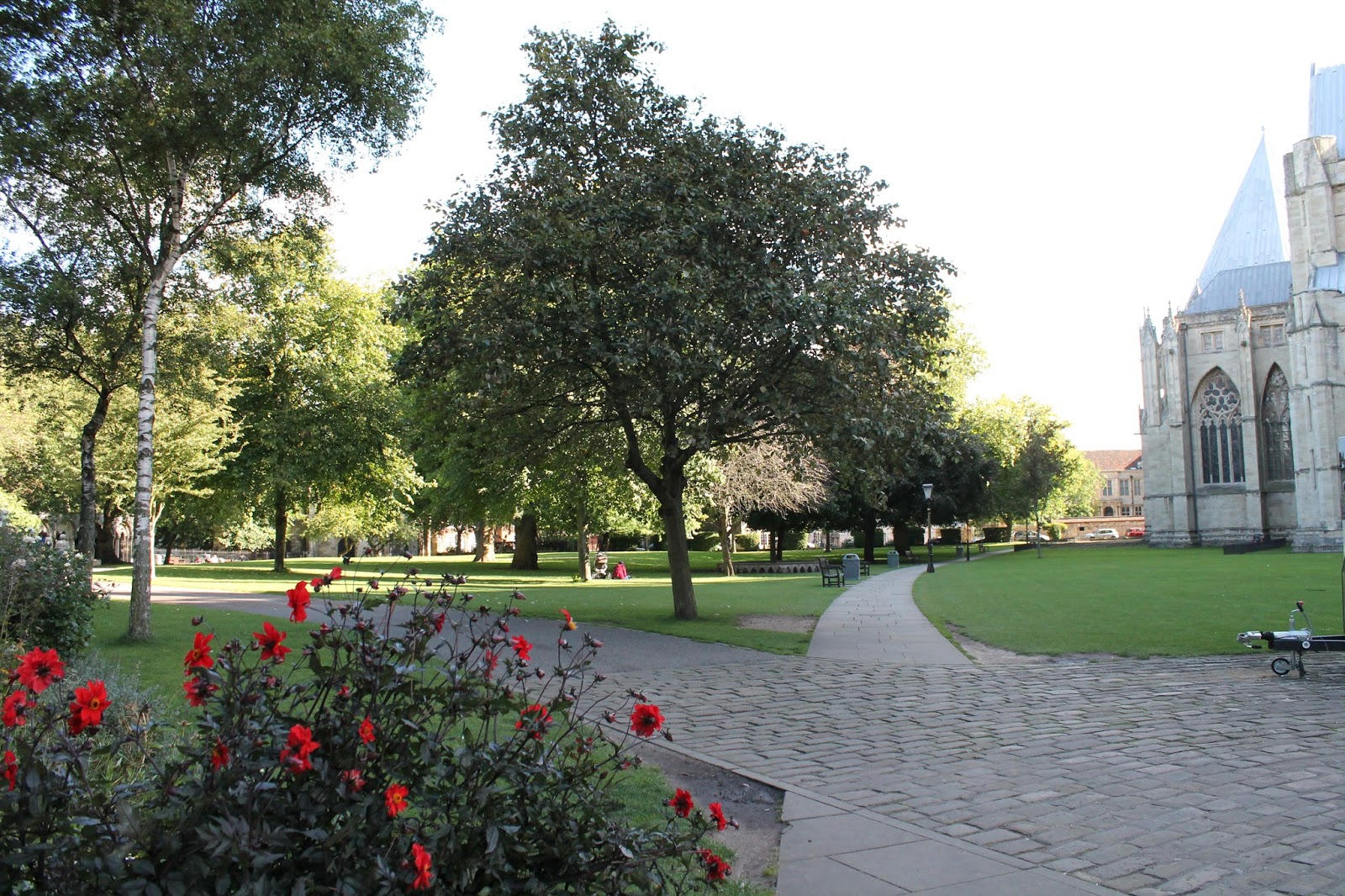The Red House

The Red House offers some imposing views of the Minster and is not named after the paint on the walls, but for the red brick used to build it. The Red House was completed in the 18th century for the Lord Mayor Sir William Robinson who later became the MP for York. Today this beautiful and eye catching town house is the home to many antiques and you are welcome to look around.
York Minster
The Minster is the most stunning building in York. The huges cathedral dominates York's skyline and can be sighted from almost anywhere in the city. This stunning example of gothic architecture is the second largest of its type in Europe. The Minster id also home to some of the finest examples of original stained glass in a UK cathedral.
The Minster had a very humble beginning however, it began as a simple wooden structure hastily built in 627AD to baptise Edwin, the future king of Northumbria due to a lack of christian churches in the area. The structure was rebuilt in stone a mere few years later and was dedicated to Saint Peter and this association has continued to the present day. Saint Peter is represented throughtout the Minster in the stained glass windows, with the finest example being found on the north side of the nave, where the Saint can be found holding a church in his hand to represent a 'universal church'. It is also believed that Saint Peter would have been represented in statues and sculpture around the Minster, but most of these will have been destroyed during Henry VIII's reformations. The wooden figure over the front did, however, survive.
The Minster fell into disrepair until 670AD when it was restored by Saint Wilfrid, with the addition of a school and a library in later years. The building was then destroyed by a fire in the 8th century and a new cathedral built with an impressive 30 alters.
Post 1066, following the invasion of William the Conqueror, his norman followers brought destruction to York and caused significant damage to the church on the site of York Minster, with the Danes causing further damage in 1075.
Finally, in 1220 AD, the Archbishop of York ordered the construction of a new cathedral to rival Canterbury in the South. The current building was finally completed in 1472AD, more than 250 years after construction began. Numerous rebuildings works have been neccessary since the Minster has been prone to fires.
Statue and Column

Outside the south transept of the Minster is the statue of the Roman Emporer Constantine the Great who converted to christianity in 312AD. This statue was introduced in 1998 to symbolise his conversion, with his broken sword shaped like a cross being a sign of religious symbolism. The Roman headquaters were situated at the site of the statue and across the road is a Roman column, found intact during excavation works in the foundations of the Minster.
St William's College
College street is named after St William's College, which possesses some of the oldest foundations in York.The building dates from 1461when it was founded as a home for chantry priests, who were paid to perform masses for a specific purpose, such as for the soul of a deceased donor to the charity fund. The preists will have been based at the Minster.

The College was named after the former Archbishop of York William FitzHerbert, whose death in 1154 was surrounded by suspicious circumstances and who is burried in the Minster, with miracles supposedly taking place around his tomb. William FitzHerbert was cannonised by the pope in 1227.
The Deanery
This is the beautiful residence of the Minster's Dean, who, along with members of the Chapter, governs the Cathedral. The property was completed in 1939 with the purpose of providing a home for the Dean in close proximity to the Minster. The Dean performs services throughout the week and controls the Minster's finances and maintains the condition of the Minster.


No comments:
Post a Comment